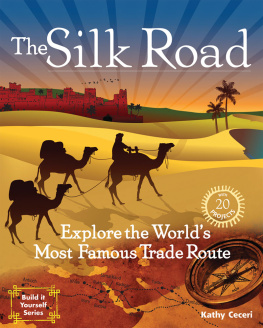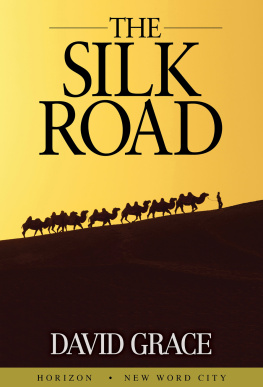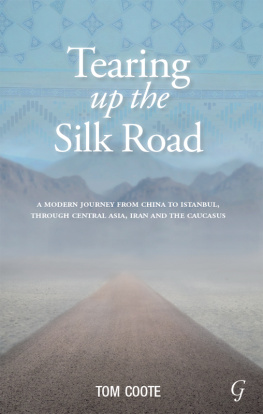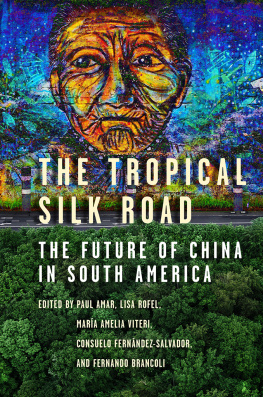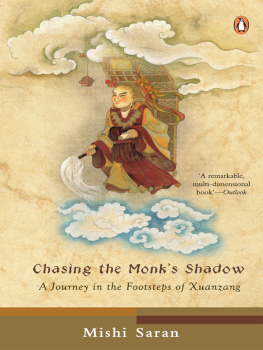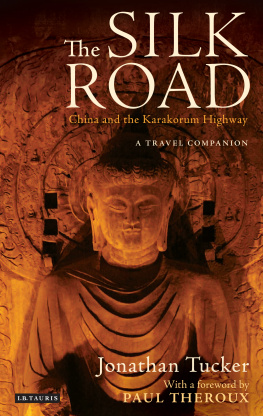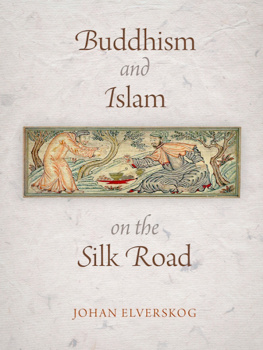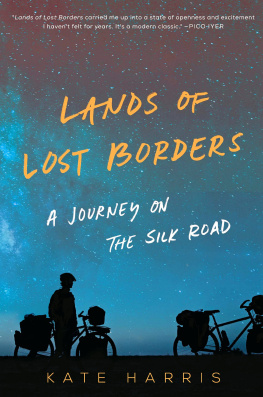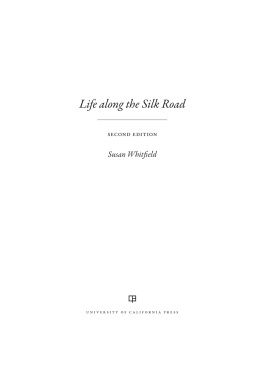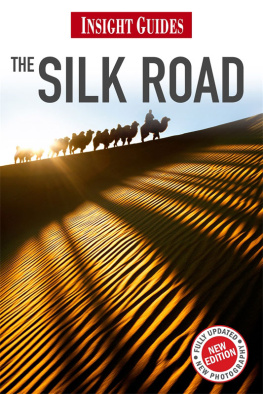Wriggins - The Silk Road Journey With Xuanzang
Here you can read online Wriggins - The Silk Road Journey With Xuanzang full text of the book (entire story) in english for free. Download pdf and epub, get meaning, cover and reviews about this ebook. year: 2008, publisher: Basic Books, genre: Art. Description of the work, (preface) as well as reviews are available. Best literature library LitArk.com created for fans of good reading and offers a wide selection of genres:
Romance novel
Science fiction
Adventure
Detective
Science
History
Home and family
Prose
Art
Politics
Computer
Non-fiction
Religion
Business
Children
Humor
Choose a favorite category and find really read worthwhile books. Enjoy immersion in the world of imagination, feel the emotions of the characters or learn something new for yourself, make an fascinating discovery.

The Silk Road Journey With Xuanzang: summary, description and annotation
We offer to read an annotation, description, summary or preface (depends on what the author of the book "The Silk Road Journey With Xuanzang" wrote himself). If you haven't found the necessary information about the book — write in the comments, we will try to find it.
The Silk Road Journey With Xuanzang — read online for free the complete book (whole text) full work
Below is the text of the book, divided by pages. System saving the place of the last page read, allows you to conveniently read the book "The Silk Road Journey With Xuanzang" online for free, without having to search again every time where you left off. Put a bookmark, and you can go to the page where you finished reading at any time.
Font size:
Interval:
Bookmark:
WITH XUANZANG


All rights reserved. Printed in the United States of America. No part of this publication may be reproduced or transmitted in any form or by any means, electronic or mechanical, including photocopy, recording, or any information storage and retrieval system, without permission in writing from the publisher.
Copyright 2004 by Westview Press
Published in the United States of America by Westview Press, A Member of the Perseus Books Group, 5500 Central Avenue, Boulder, Colorado 80301-2877, and in the United Kingdom by West-view Press, 12 Hids Copse Road, Cumnor Hill, Oxford OX2 9JJ.
Find us on the world wide web at www.westviewpress.com
Westview Press books are available at special discounts for bulk purchases in the United States by corporations, institutions, and other organizations. For more information, please contact the Special Markets Department at the Perseus Books Group, 11 Cambridge Center, Cambridge, MA 02142, or call (617) 252-5298, (800) 255-1514 or email .
Library of Congress Cataloging-in-Publication Data
Wriggins, Sally Hovey.
The Silk Road journey with Xuanzang / Sally Hovey Wriggins.
p. cm.
Rev. ed. of: Xuanzang. 1996.
ISBN 0-8133-6599-6 (alk. paper)
eBook ISBN: 9780786725441
1. Xuanzang, ca. 596664. 2. Priests, BuddhistChina Biography. I. Wriggins, Sally Hovey. Xuanzang. II. Title.
BQ8149.H787W74 2003
294.3'92dc21
2003013620
The paper used in this publication meets the requirements of the American National Standard for Permanence of Paper for Printed Library Materials Z39.48-1984.
Typeset in 11-point Sabon by the Perseus Books Group
To Fritz Mote, source ofinspiration and unending support.

A Chinese emperor called him the jewel of the empire, this Buddhist monk who journeyed from China to India on the Silk Road in the seventh century. Xuanzang (Hsuan-tsang), one of the Silk Roads most famous travelers, is as well known in Asia as Marco Polo is in the West. He wanted to go to the holy land of Buddhism in India to obtain the true scriptures instead of having to rely on the sometimes confusing translations then available in China. He also hoped to study with famous religious teachers and to see the sacred places of the Lord Buddha. During his journey, from 629 to 645 C.E., he traveled an astonishing 10,000 miles.
I first encountered Xuanzang when I was researching the sixteenth-century Chinese classic novel Journey to the West or Monkey . His pilgrimage inspired a cycle of legends in China, which became the epic novel, and he became a character in the novel and a folk religious hero. This is the Xuanzang that most people in Asia know.
Many visits to Asia stimulated my interest in Xuanzang. When I talked to curators from the Kabul Museum in the mid-1970s about this pilgrim and his journey, they produced a map showing me exactly where he had been in Afghanistan. Such a detailed knowledge of the places he visited was unbelievable to me. Wasnt this pilgrimage only a century after the legendary King Arthur is supposed to have lived in mist-shrouded Wales or northern England? What impressed me even more was that they described Xuanzang in the same way modern detectives talk about a live witness.
By going many times to the places in China, Pakistan, Afghanistan, and India where he had been, I discovered that Xuanzang was an accurate and careful observer of whatever he saw. I couldnt believe his physical exploits, crossing the Taklamakan Desert alone, traversing the mountains I was looking up at along the Silk Road, three of the highest ranges in Asia. Later on, I realized that he had criss-crossed the plains and jungles of India five times. While visiting Indias most famous monastery, Nalanda, I began to appreciate that he was not just a world-class trekker, but a disciplined scholar. At the holy places of Buddhism, he was a man of feeling, a devout pilgrim.
As I delved into the principal sources on this seventh-century travelerhis report to the Tang emperor after he returned to China and an admiring biography by one of his contemporaries (Huili) it was clear that they complemented one another. Huili put Xuanzang and his personal experiences in the foreground. In Xuanzangs own narrative, the pilgrim stays in the background and rarely refers directly to himself. His style is unemotional and highly detached. He is, after all, writing for the Tang emperor. By embroidering on his adventuresstaging a hunger strike in front of the king of Turfan, betrayed by his desert guide and nearly dying of thirst in the desert, almost killed by a band of piratesHuili gives them storybook qualities so that Xuanzang is already on his way to becoming a legend. When I began to write, I tried to capture the appeal of Xuanzang as a folk hero; in italicized passages, I distill the best of his two biographers, Huili and Li Yongshi, to make the stories more vivid.
In this edition, I also describe Xuanzangs many years back in China when he translated the Buddhist scriptures he had gathered all over Asia. I have come to an even greater appreciation of his intellectual qualitiesas accomplished linguist and disciplined scholar. I became acquainted with Xuanzang as an ardent and successful promoter of Buddhism who was very ingenious in cultivating the goodwill of two Tang emperors. But throughout his life Xuanzang demonstrated an amazing consistency in his devotion to the Buddha of the Future, the Maitreya. This devotion shows itself in the legends of when he was about to be burned at the stake by pirates, and as he lay on his deathbed.
Xuanzang is being discovered now in the West. There are several new English translations of both his record for the emperor and his biography. With the Talibans destruction of the giant Buddhas at Bamiyan (which Xuanzang visited and wrote about), Afghanistan has become for people around the world the land of the Buddhas. The Silk Road is the subject of many art exhibitions, TV programs, and books, and has been celebrated all over the world with Yo Yo Mas Silk Road festivals. A new wave of interest in world history focuses on broad trends such as the transmission of Buddhism from India to China, in which Xuanzang played such a crucial role. Some Buddhist scholars have also been writing about the practice of Buddhism, using Xuanzang as a potent illustration.
By retracing his travels on the Silk Road and including more about his years in China after his journey, I have sought to rediscover Xuanzang as a person of deep religious feeling with a powerful mind, a man of adventure with a strong personality who was at home in both religious and secular worlds. While one of the challenges for me has been to come to know Xuanzang as a person, I have also sought to illustrate his journey through the wonderful Buddhist art that he saw and to see him in the context of the two great cultures of AsiaIndia and China.
Sometimes the peculiar qualities of the man seem to be overshadowed by the legends that grew up about him. Yet there were moments when he showed human frailties, such as when he, surrounded by Indian monks who dismissed China as inferior, staunchly defended his homeland. He was very Confucian in his reactions to some of the excesses of Hinduism, so that he was driven to comment that the naked man who covered his body with ashes is like a cat who has slept in the chimney corner. He could also be naive, credulous, believing anything anyone told him (this side of Xuanzang is satirized in the epic novel).
Font size:
Interval:
Bookmark:
Similar books «The Silk Road Journey With Xuanzang»
Look at similar books to The Silk Road Journey With Xuanzang. We have selected literature similar in name and meaning in the hope of providing readers with more options to find new, interesting, not yet read works.
Discussion, reviews of the book The Silk Road Journey With Xuanzang and just readers' own opinions. Leave your comments, write what you think about the work, its meaning or the main characters. Specify what exactly you liked and what you didn't like, and why you think so.

